Submitted by WA Contents
Cannabis Bank winners are announced!
Taiwan Architecture News - Jul 17, 2016 - 13:00 12488 views
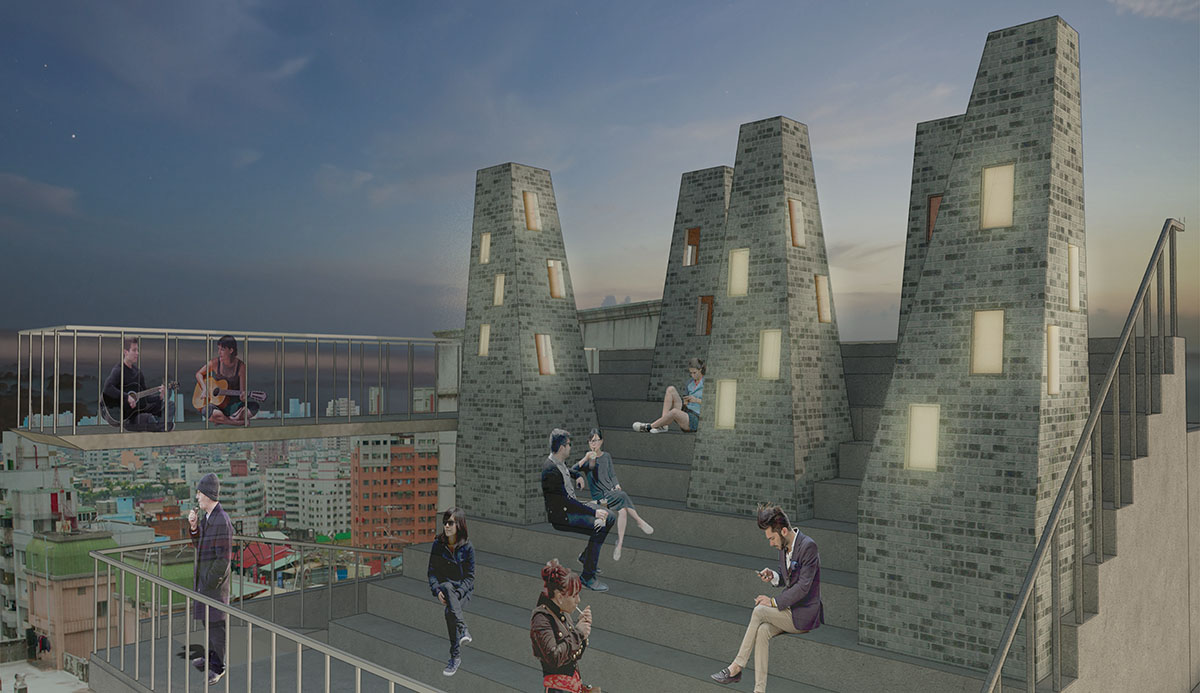
Bee Breeders Architecture Competition Organisers has announced the winners of Cannabis Bank including the countries Taiwan, Spain and USA. Participants of the Cannabis Bank architecture competition were tasked with designing a cannabis dispensary that would work to dispel the negative image associated with this drug since its legal status is slowly starting to change. An array of projects were submitted, and the jury showed a preference for those that creatively addressed the significant social considerations to introducing a legal marijuana dispensary into a community.
A team of students from the National Taiwan University of Science and Technology, called U-CAN, were selected as the first place winners. Their designs placed the Cannabis Bank on roof additions that are typical in cities in Taiwan. While this additions are technically illegal, they have long-been permitted by Taiwanese authorities; a fitting analogy for the presence of cannabis in society.
The second and third places entries, from Spain and the USA respectively, also both made clever use of the location of their Cannabis Bank projects. The team from Spain sited their project in the medical research park in Barcelona, Spain, adjacent to the beach, symbolically representing both the dichotomy of public perception surrounding medicinal and recreational Cannabis use. And the third place proposal astutely associates the steam boat as an architectural typology to house the Cannabis Bank, with steamboats being an essential part to the development of trade and commerce in the southern US states.
See the three winner's projects and honorable mentions below:
1st prize winner: U-CAN, Taiwan, I-Ting Chuang, Yu Han Wu, Takanori Kodama, Jing-Yao Lin (The National Taiwan University of Science and Technology)
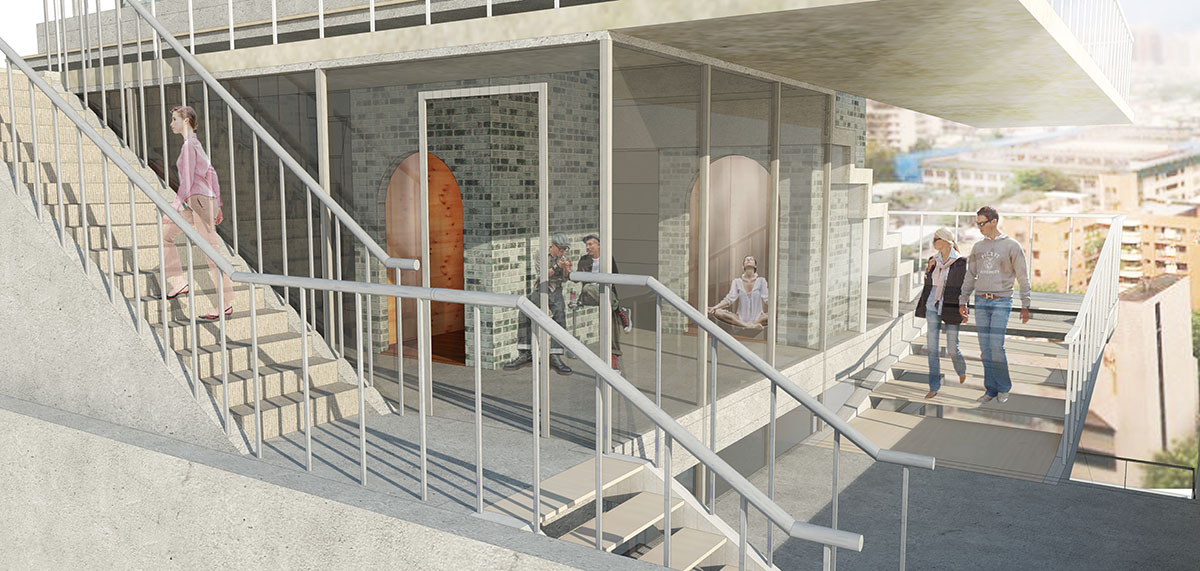
U-CAN places the Cannabis dispensary on roof additions typical in cities of Taiwan. Although illegal, these roof additions have traditionally been permitted by Taiwanese authorities and are commonly used as places of household ancestral worship as well as shared social space. By associating the Cannabis dispensary with this explicitly illegal yet implicitly condoned urban fabric, U-CAN acknowledges the political paradoxes of a substance that is simultaneously illicit and sanctioned, recognizing Cannabis as a cultural artifact rather than just a prohibited product.
U-CAN navigates these ambiguities spatially, embedding both the public and private spaces of a Cannabis dispensary into an unsanctioned urban fabric. The proposal envelopes the intimate program of private consultation rooms within the more public visitor and commerce areas. These private rooms are expressed as light chimneys on the roof, creating a public gathering space that reaffirms Cannabis use as a fundamentally social and spiritual transaction. The U-CAN proposal successfully plays these political and social ambiguities against one another through this collective inhabitation of the roof, a space that is unsanctioned, marginal, forbidden, and yet a fundamental part of a shared urban identity.
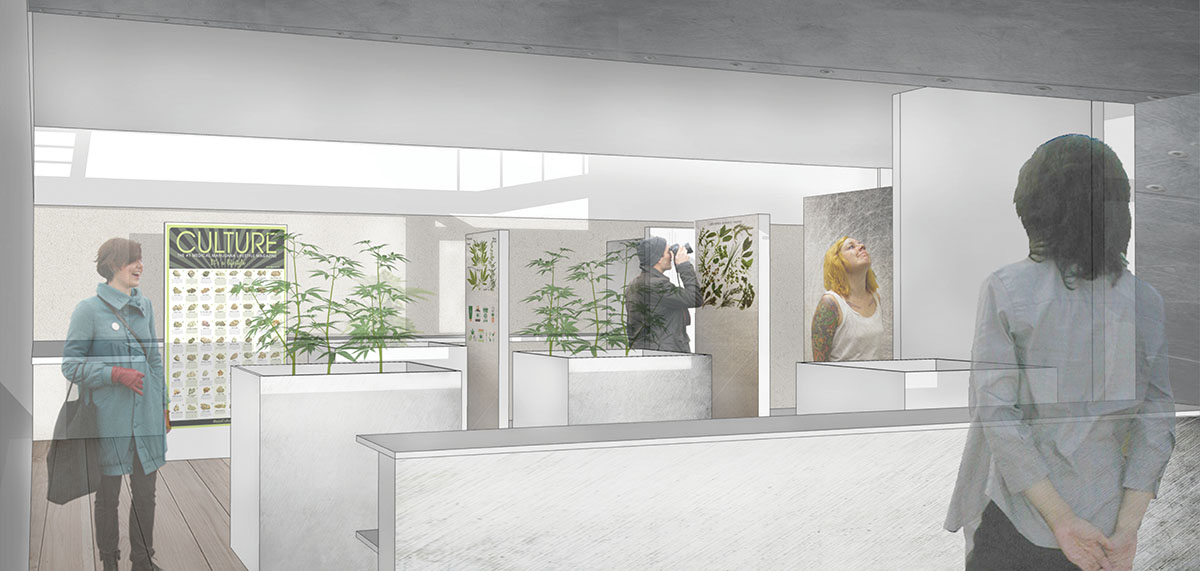


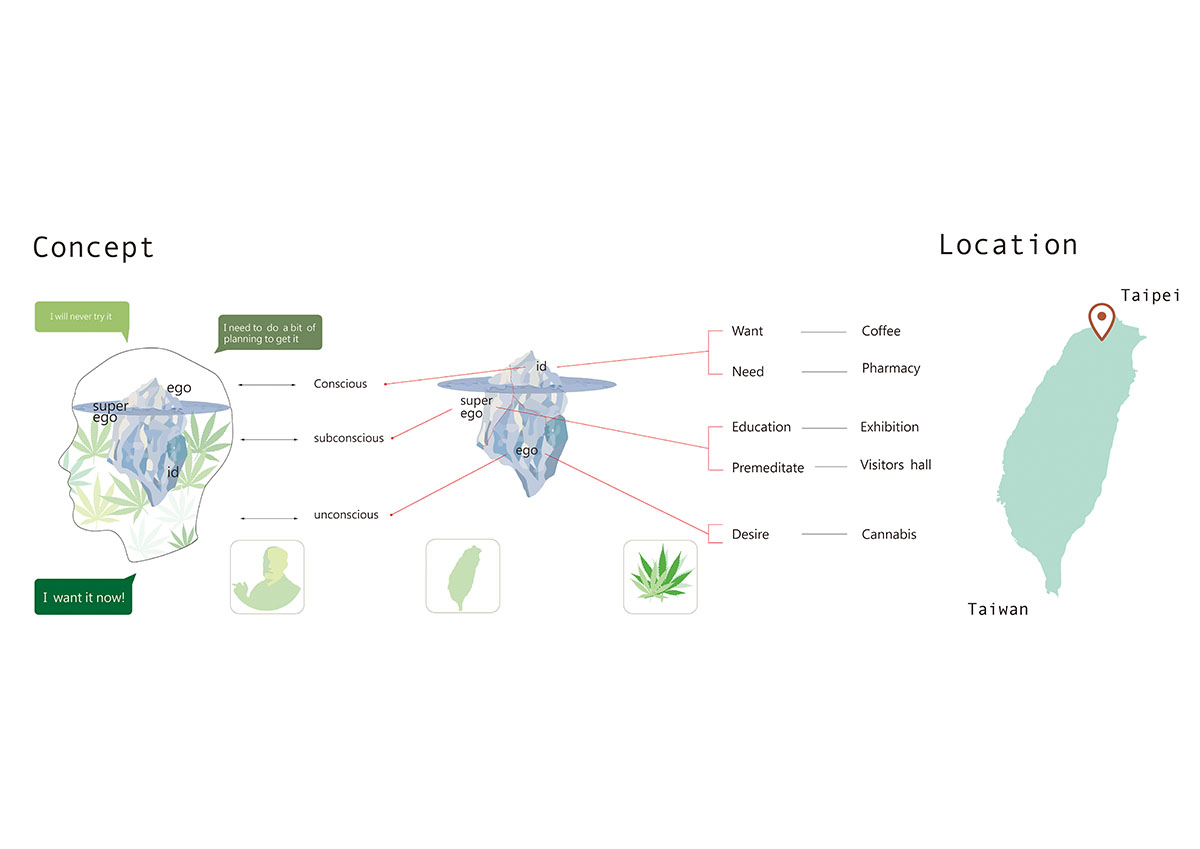
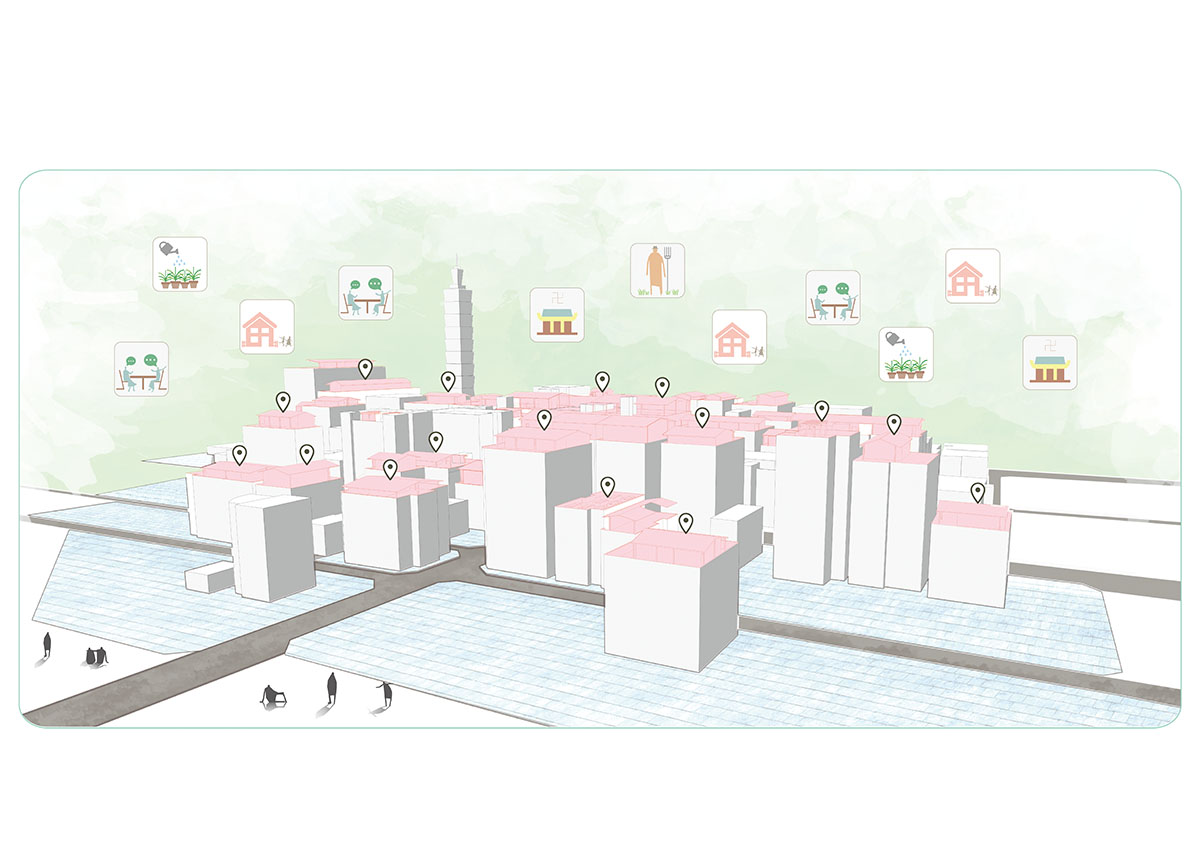
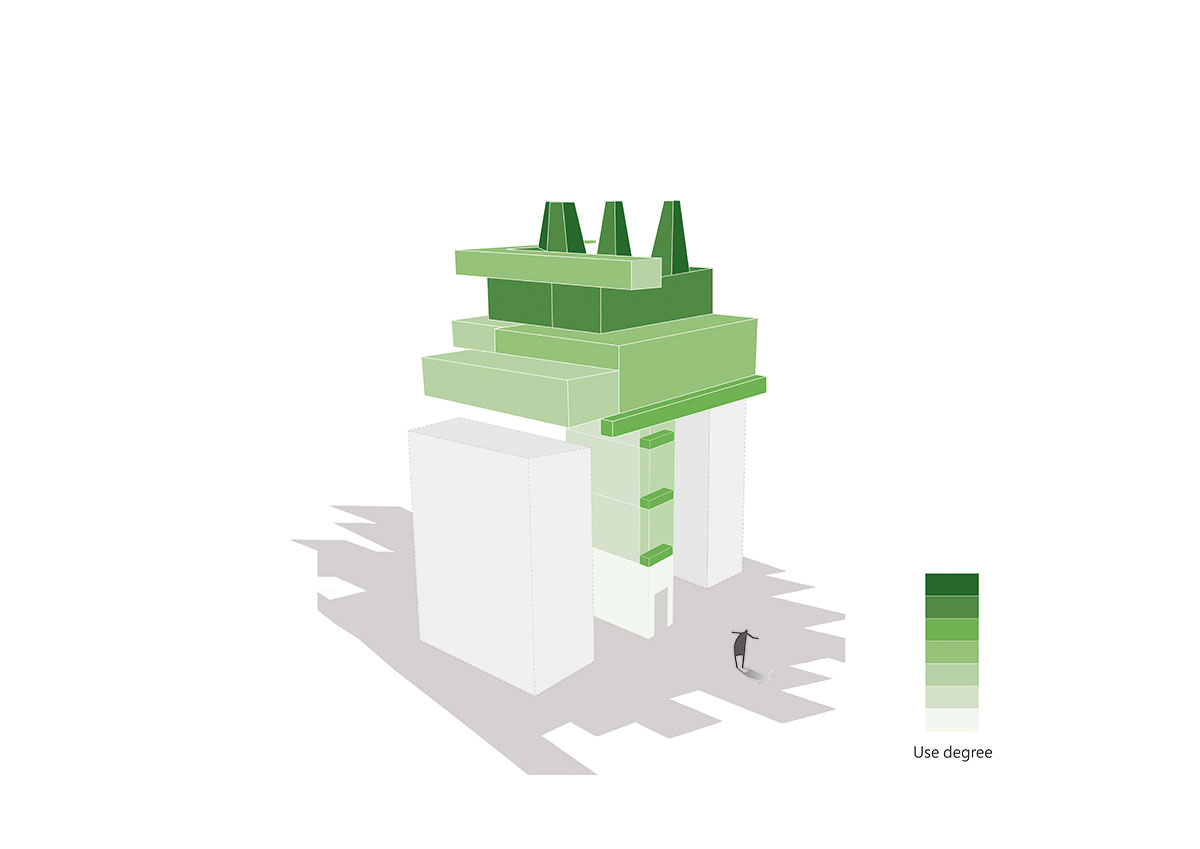
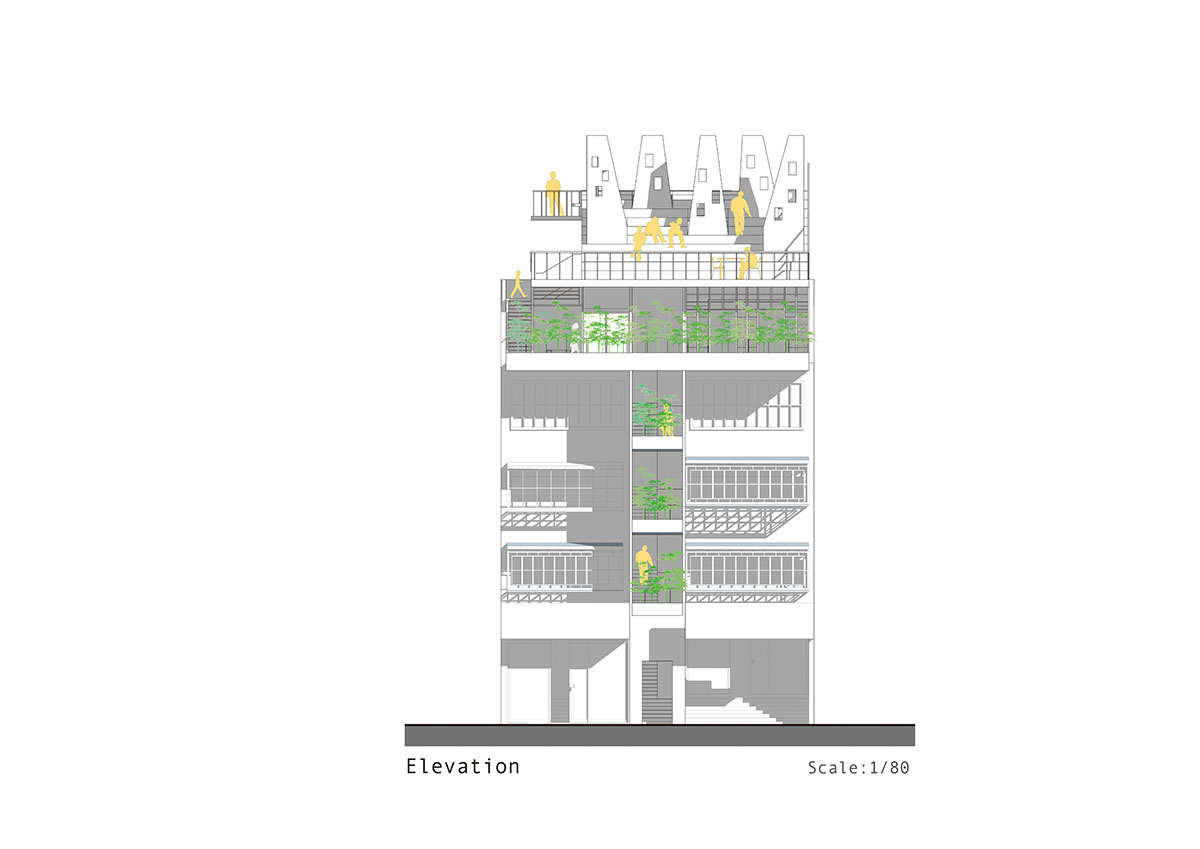
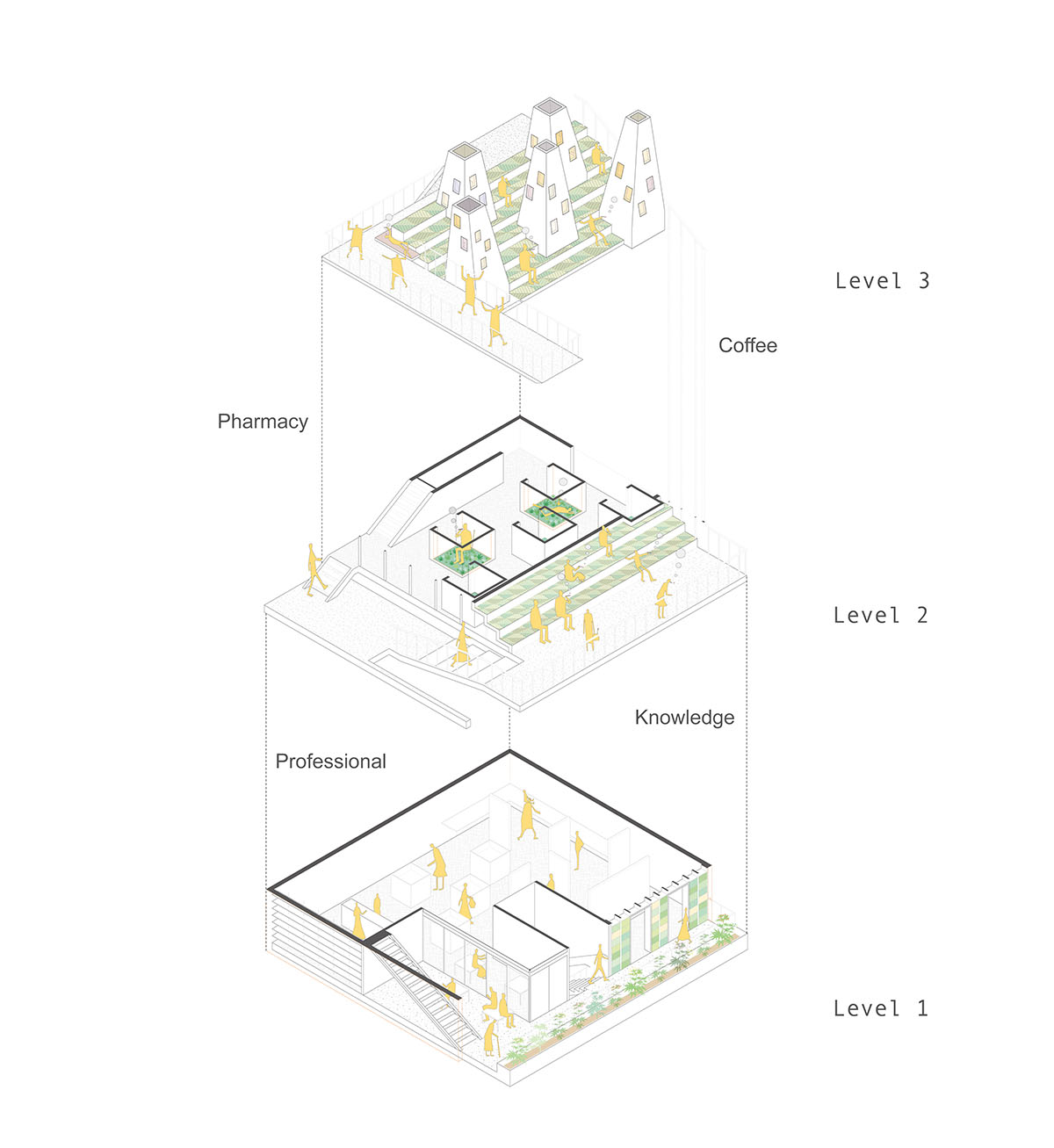
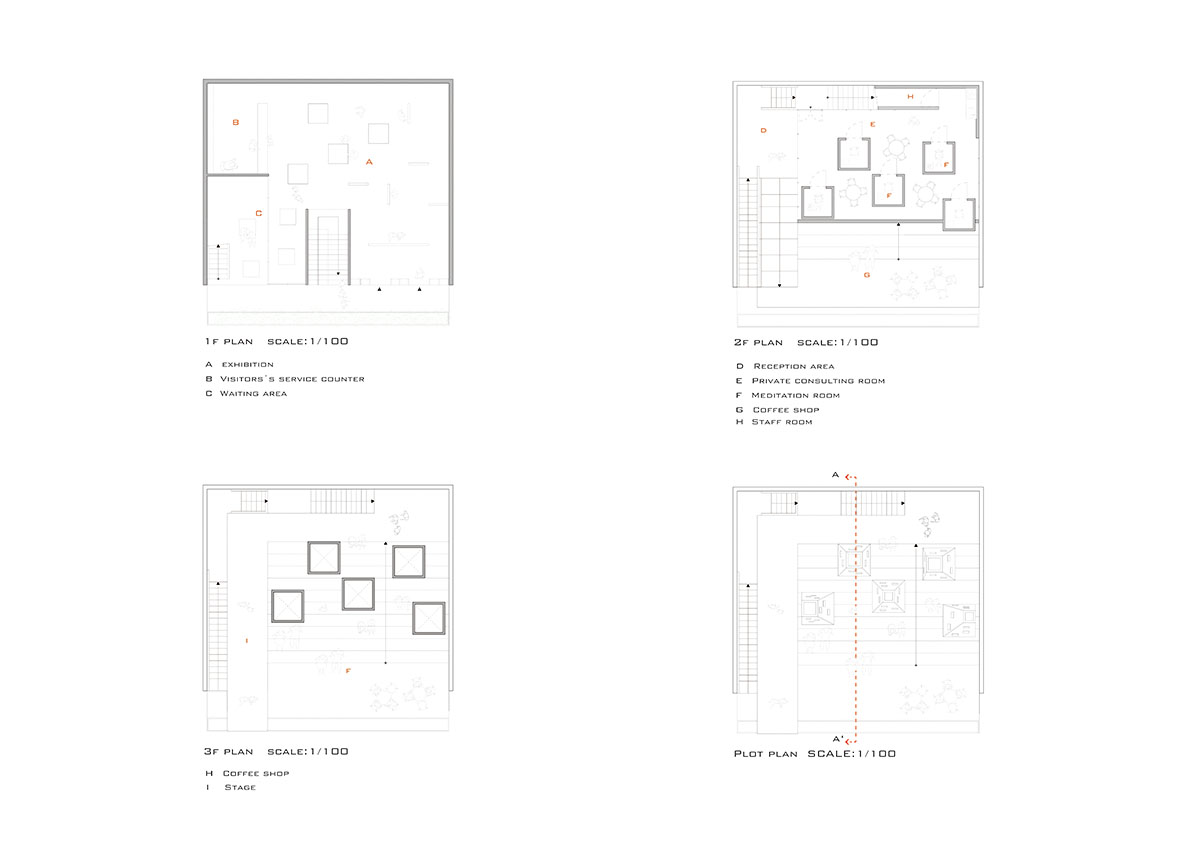
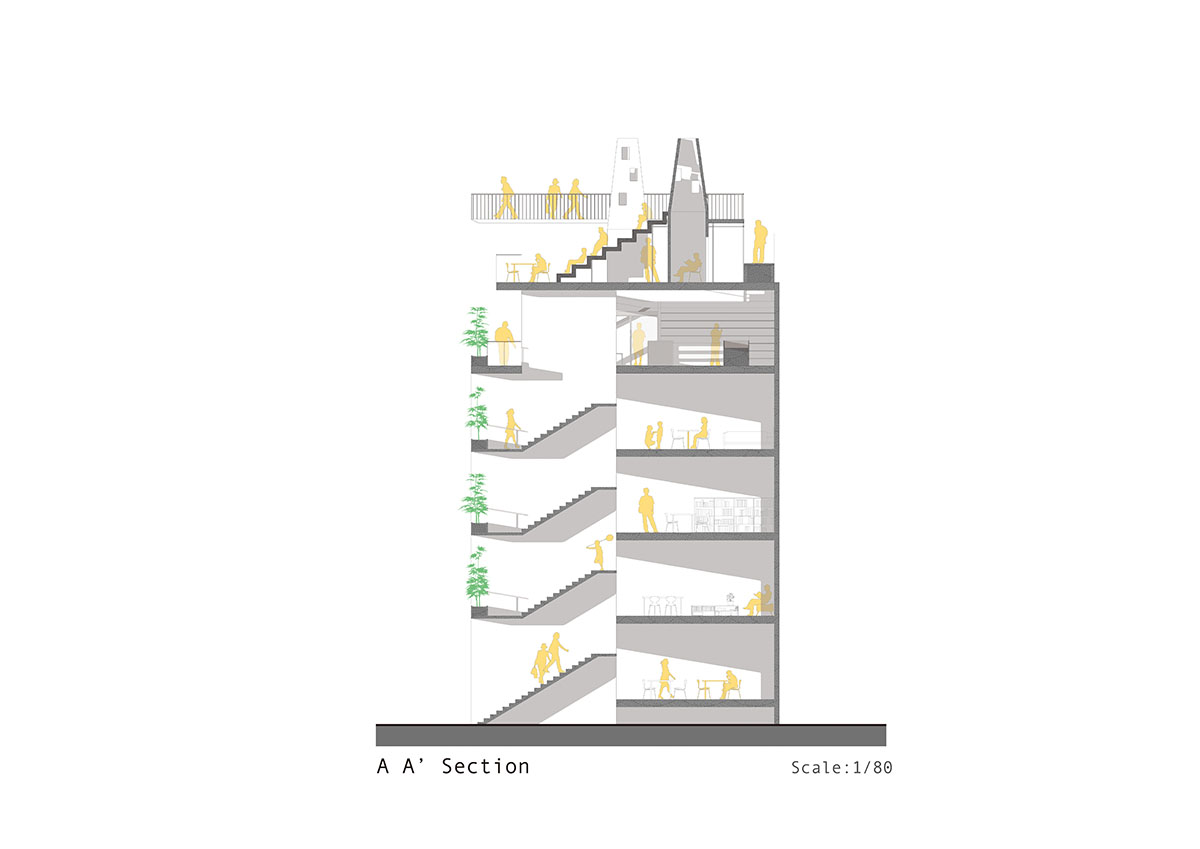
2nd prize winner: Cannaleonic Bank, Spain, Hector Duran, Albert Pla, Joan Pau Alberti
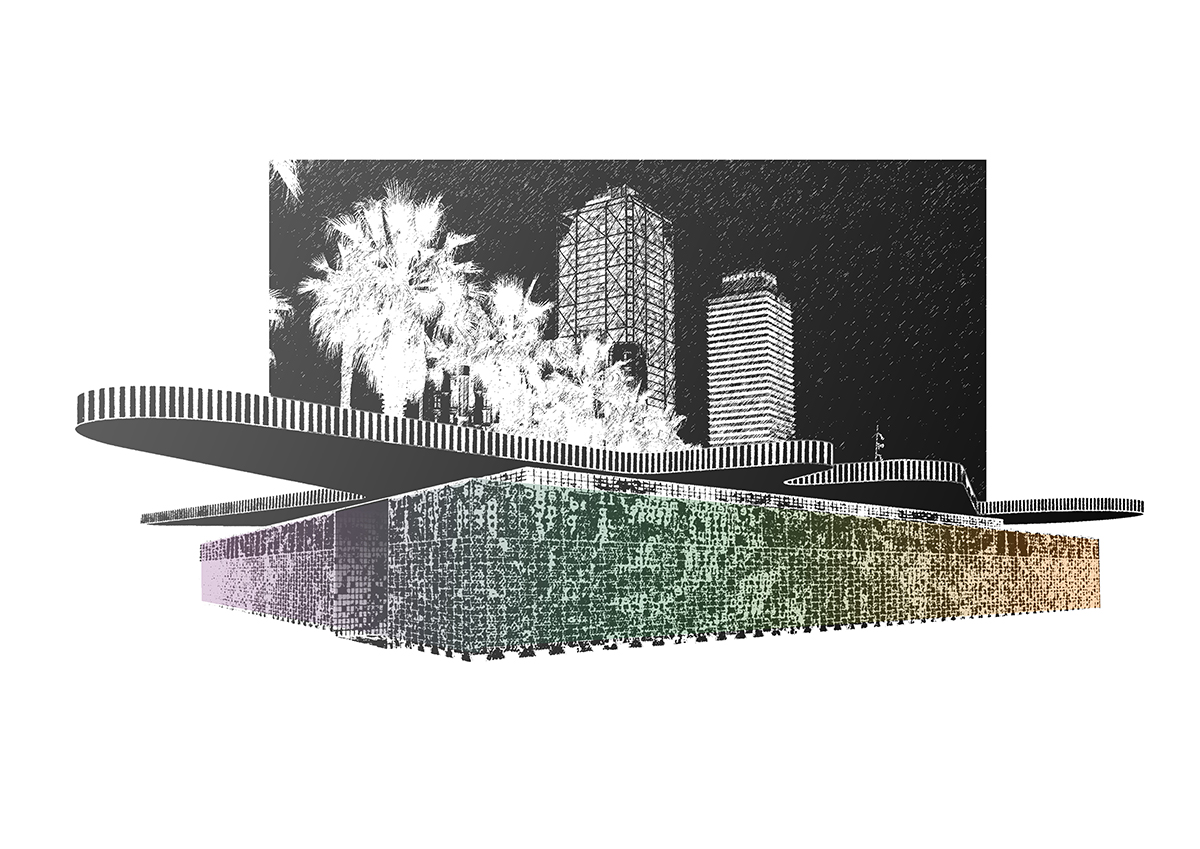
The second place proposal is successful in its interpretation of the local politics surrounding Cannabis use, combined with clever architectural language to communicate a clear concept that is both iconic and versatile. The proposal is strategically sited in the medical research park in Barcelona, Spain, adjacent to the beach, symbolically representing both the dichotomy of public perception surrounding medicinal and recreational Cannabis use. Formally, the project is composed of a square boundary wall made up of informational pamphlets delineating the public from private.
This ephemeral boundary literally degrades and morphs as people consume information, slowly revealing the project’s interior. Beyond this ephemeral skin, the program is hosted in a series of rectilinear volumes loosely formed around a central courtyard open to the sky. This interior space, based on a simple column grid, is simultaneously intimate and social, both functional and mutable depending on the needs of a particular locale. Floating above this interior, the roof comprises the iconicity of the project: a flat horizontal datum laden and overflowing with plantings. The curvilinear contrast of the roof to the volumes beneath draws the eye to a recognizable silhouette and creates shaded public space.
2nd prize winners interview
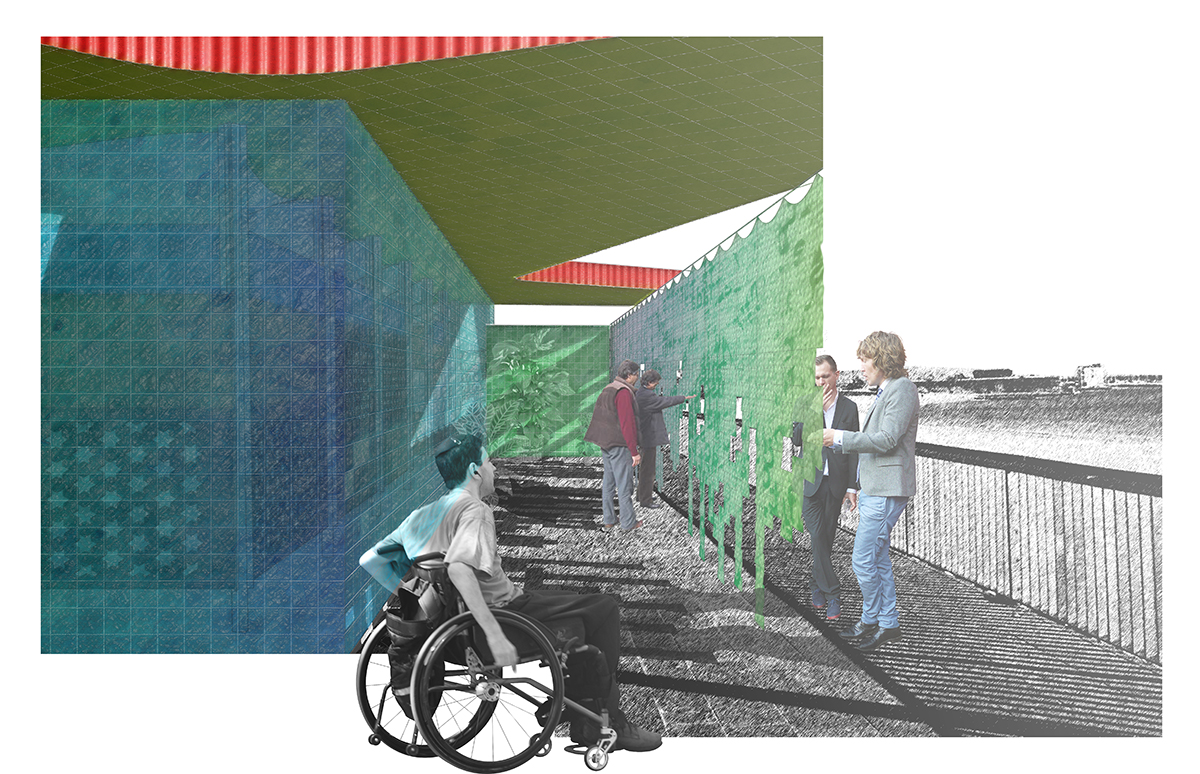
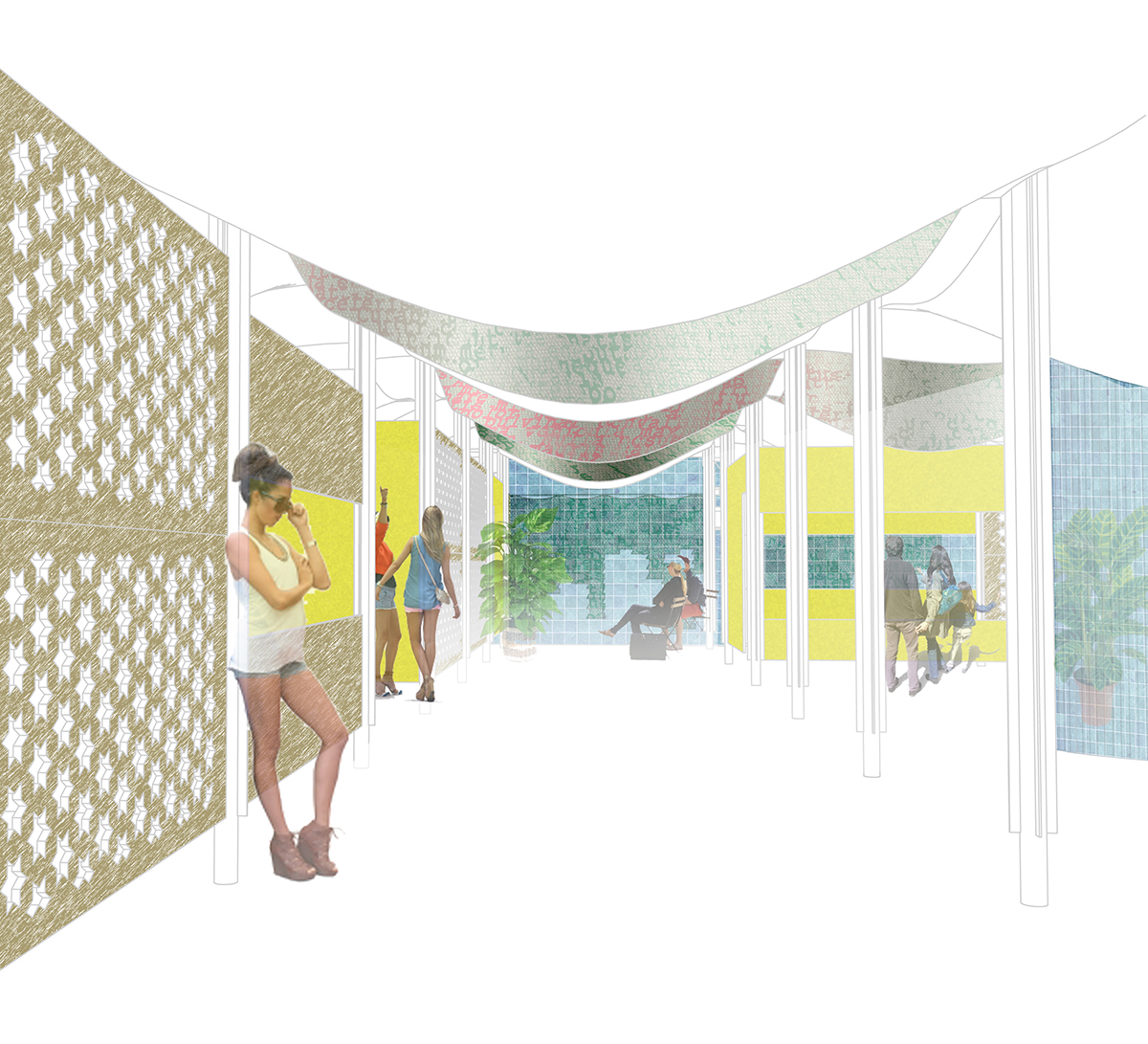

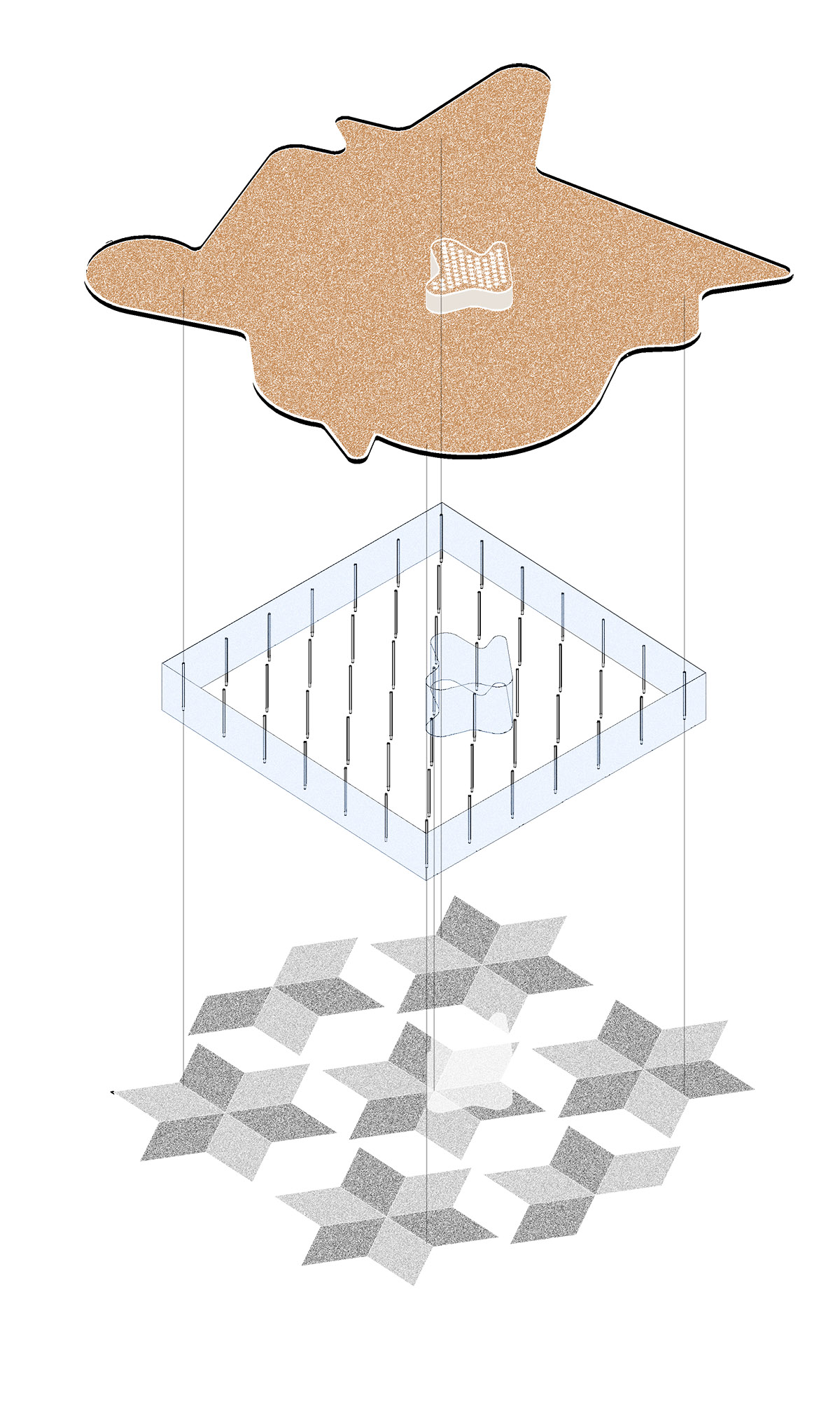
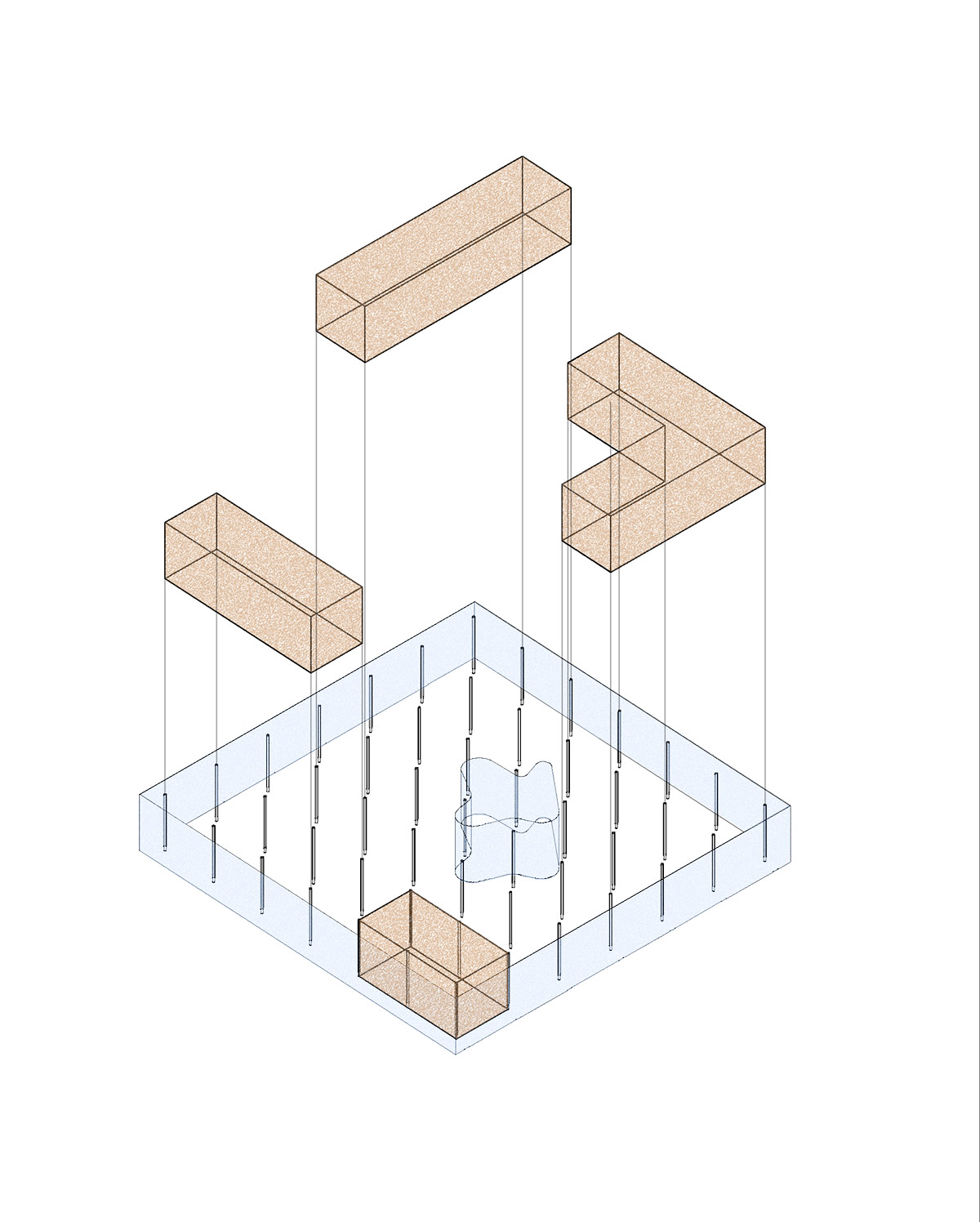
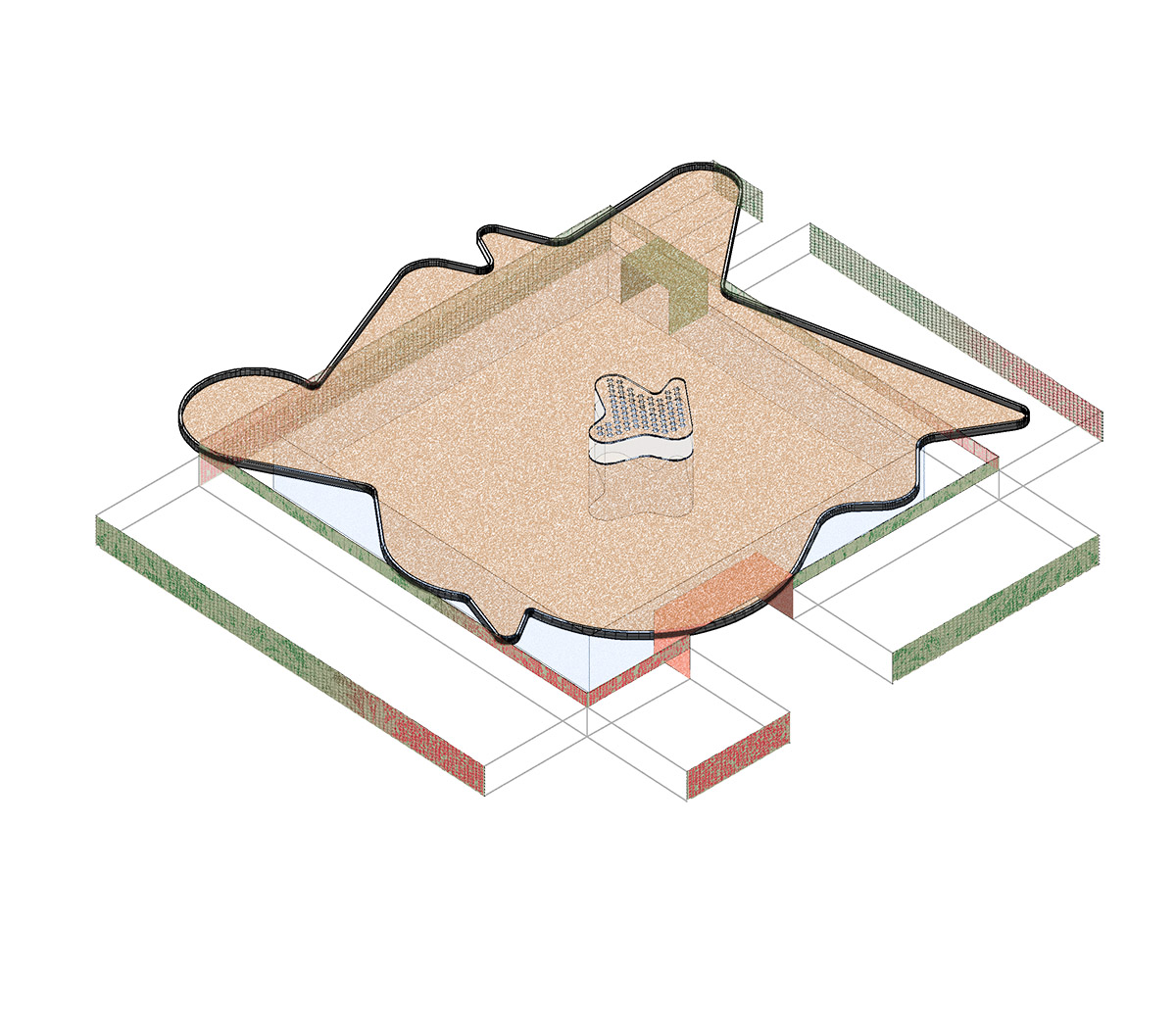
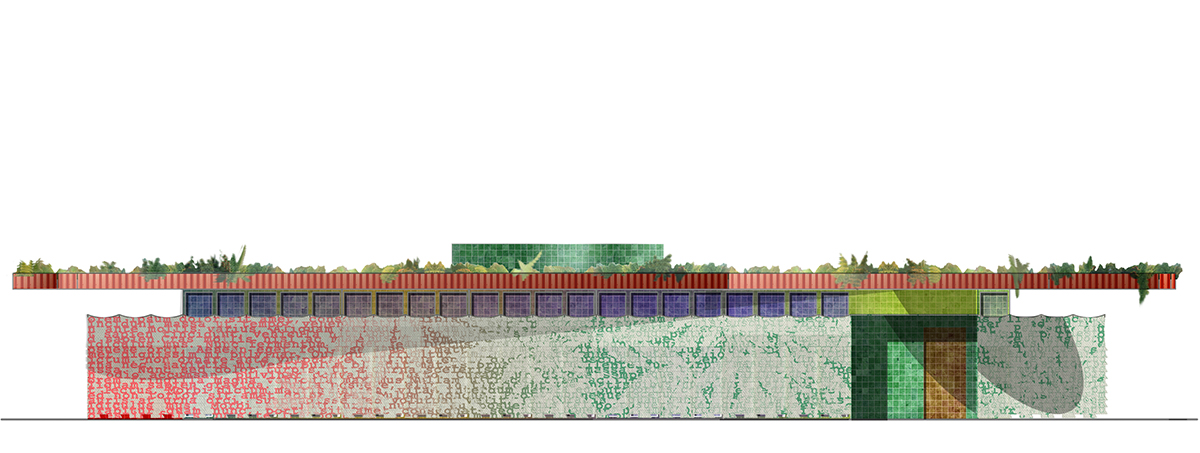
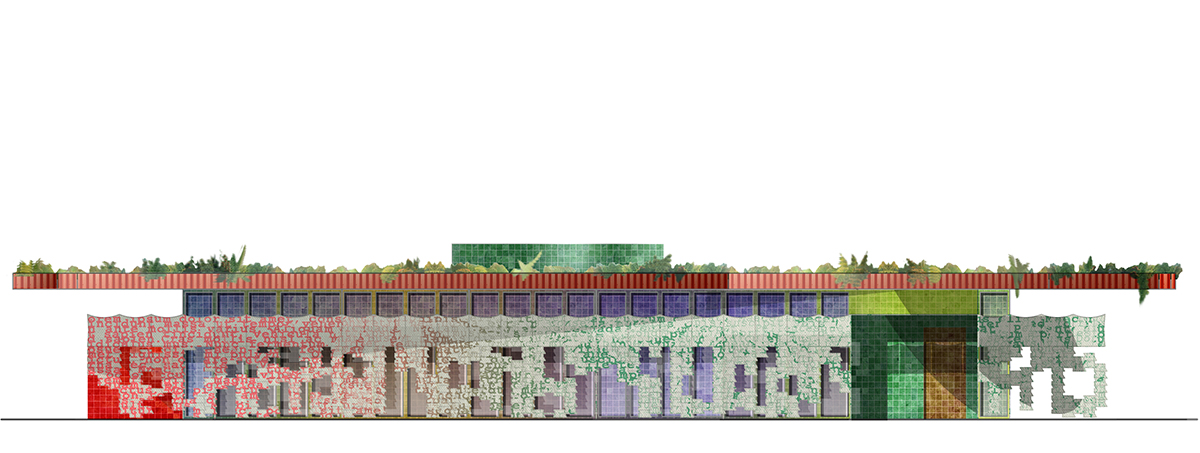
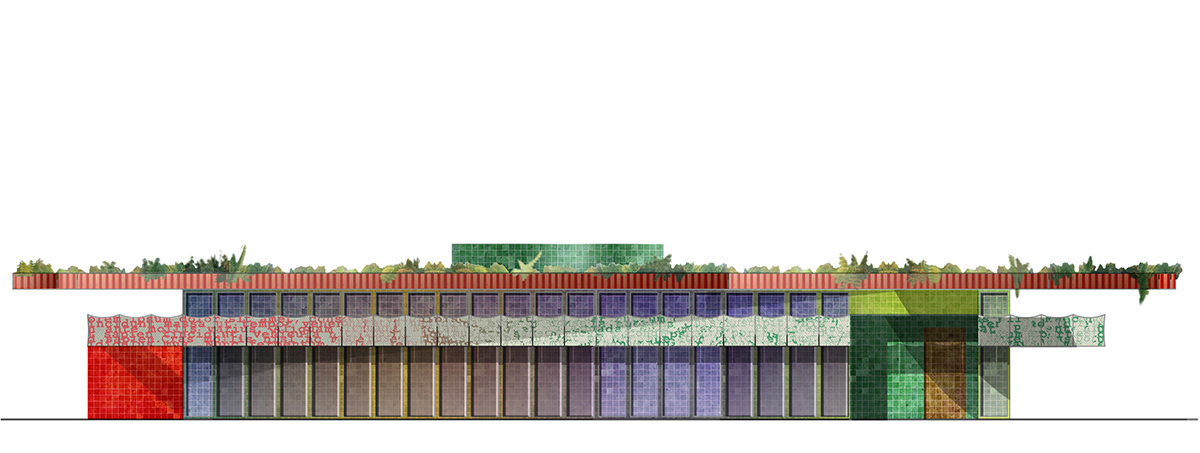
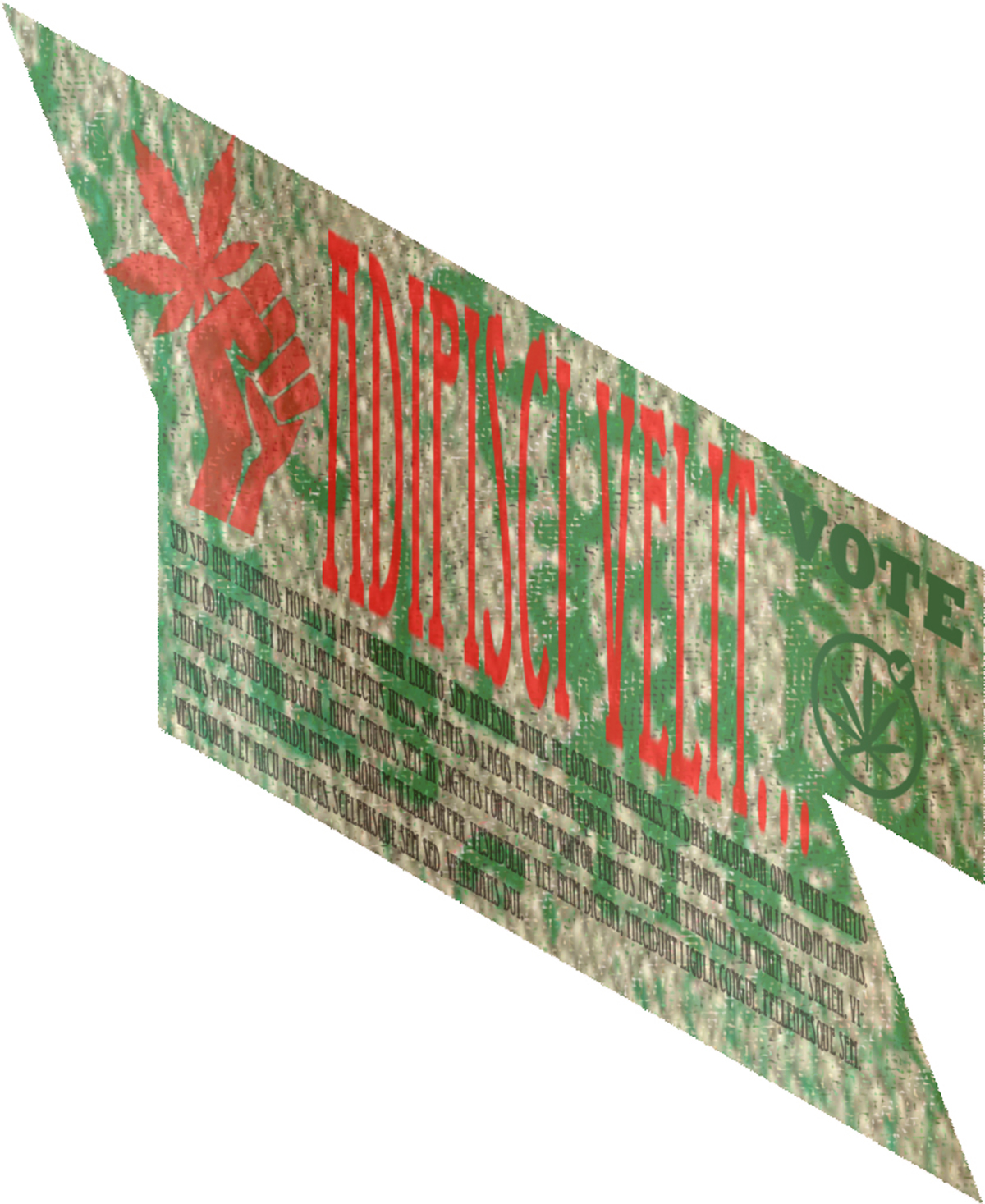
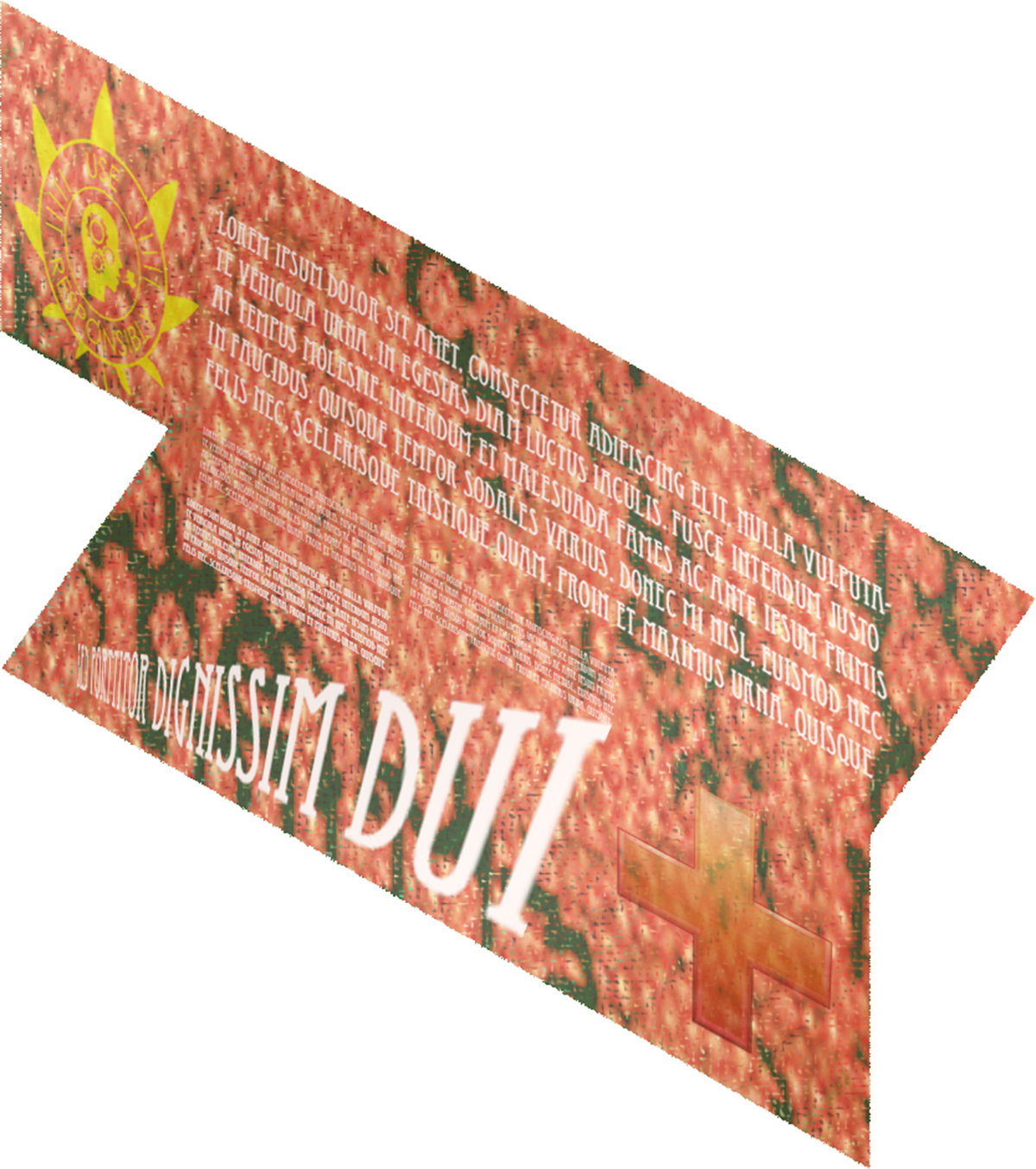

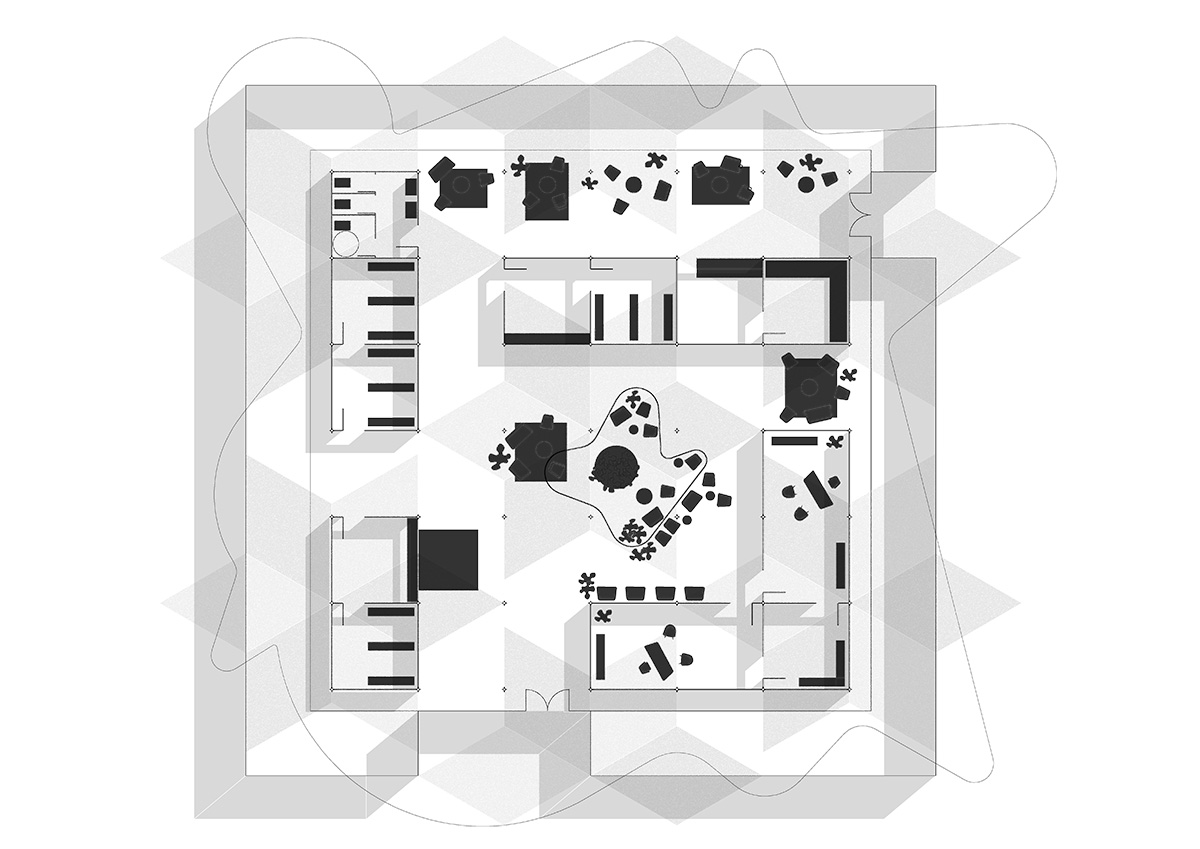

3rd prize winner: Cannabis River Cruise, Cruz Crawford, Sheehan Wachter, USA (Uburo Design)

The third place proposal astutely associates the steam boat as an architectural typology to house the Cannabis dispensary. Historically, steamboats played a major role in the advancement of American society, carrying goods and passengers up and down the Mississippi River. As a major form of transportation, the architecture of passenger steamboats adapted an extravagance of great halls, colonnades, and class, serving as a form of promenade for prominent individuals. Through adaption of architectural and technological form, the Cannabis River-Cruise implies a level of etiquette and societal progression to the culture of Cannabis. The project makes a bold statement that the societal view of Cannabis is evolving from transgression to prestige.
The architecture of the Cannabis River-Cruise relates back to the historic model of the steam boat through stratification of program and use of archetypes. The more utilitarian and private programs are purposefully located on the lower enclosed deck, allowing the spatial and explorative programs to be elevated. As in historic steamboats, the upper deck allows users to meander between colonnades on an elevated platform to see and be seen by passing shorelines. The great hall, designed as a cocoon behind a white veil, floats above the upper deck creating an intimate and other worldly meditative space for the use of medicinal Cannabis. The white veil with smoke stacks rising skyward acts as an architectural signifier to onlookers from shorelines passing by as the ship freely moves north to south, transcending cultural and political boundaries.
3rd prize winners interview
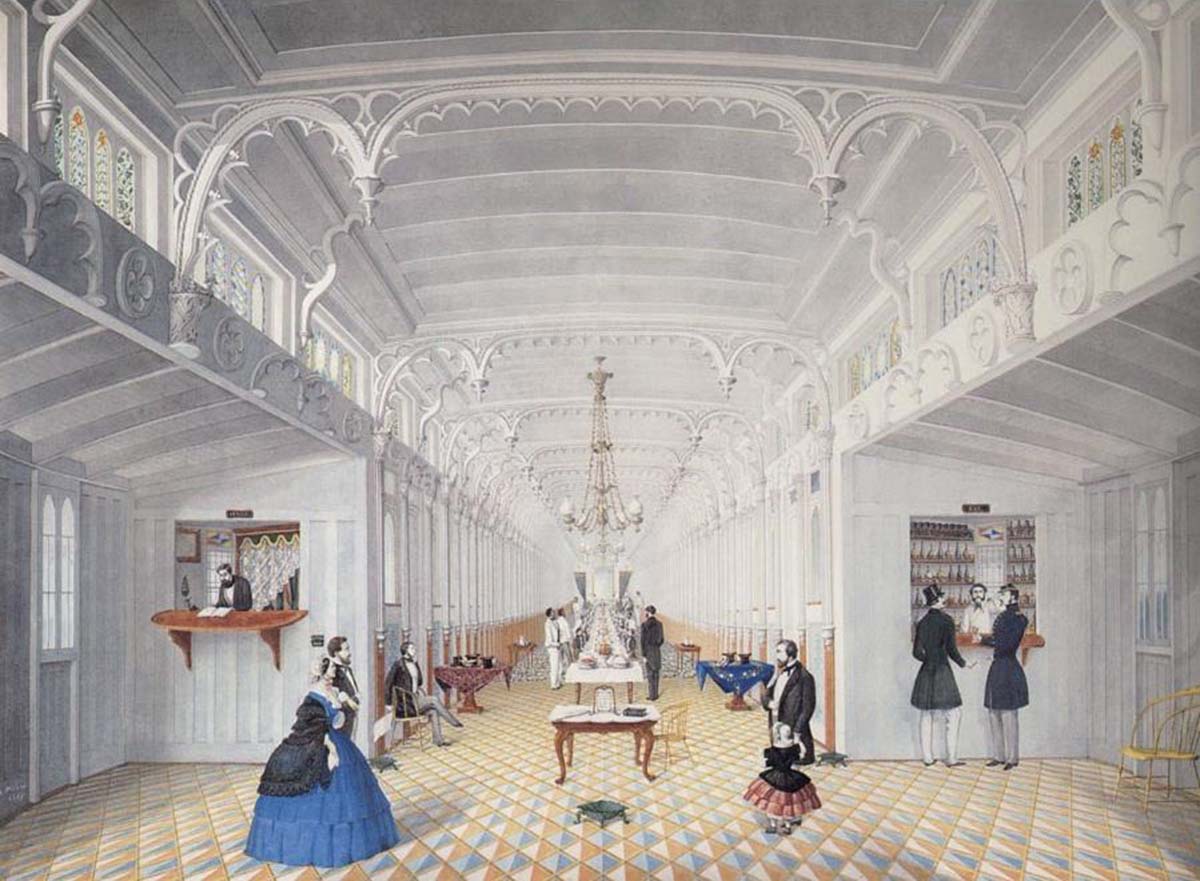
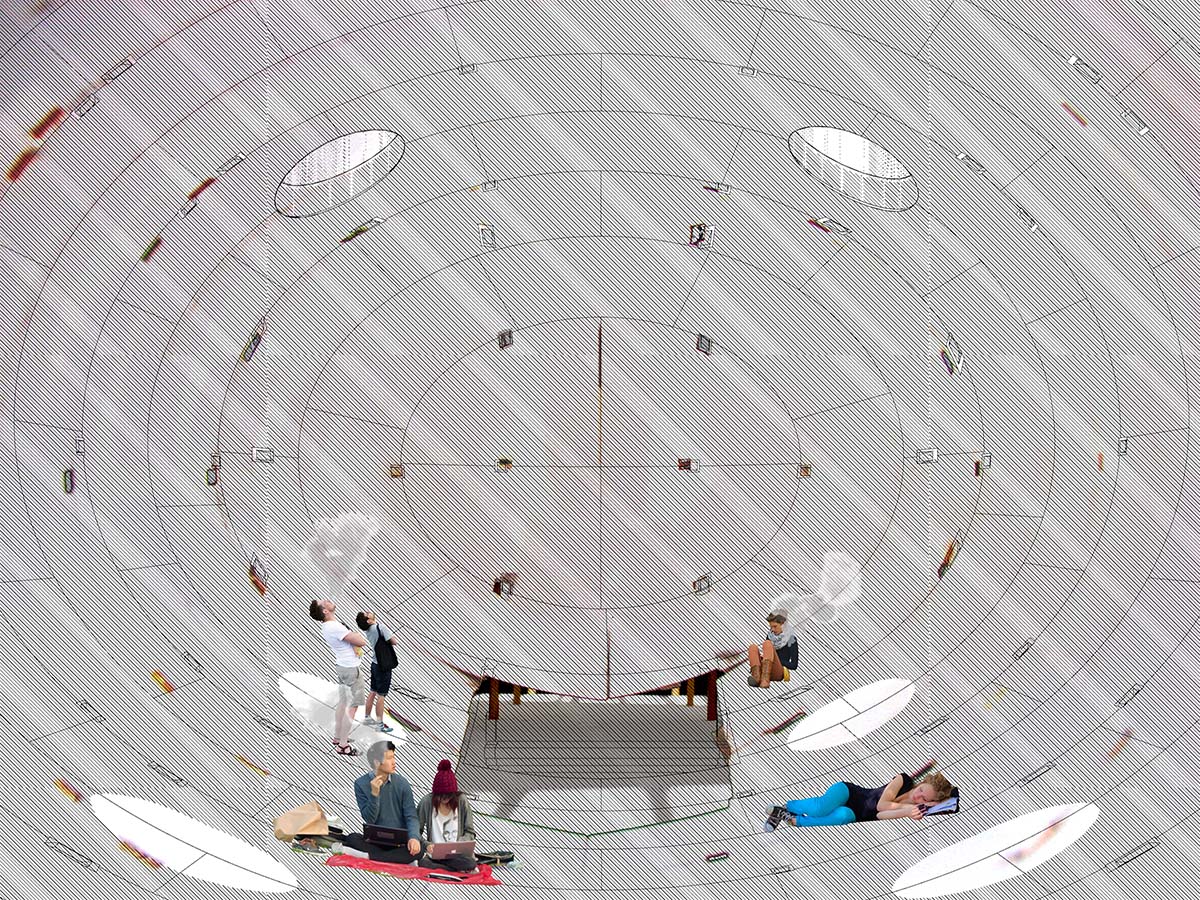
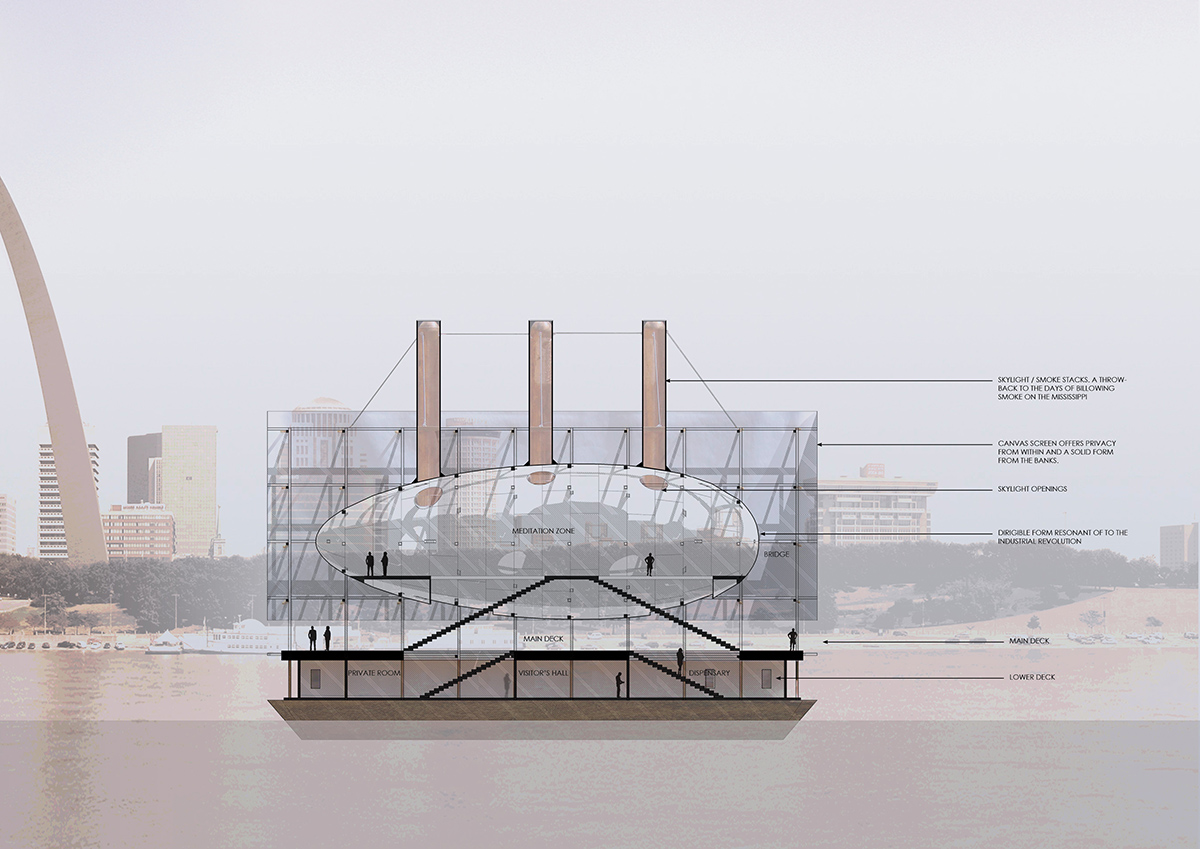



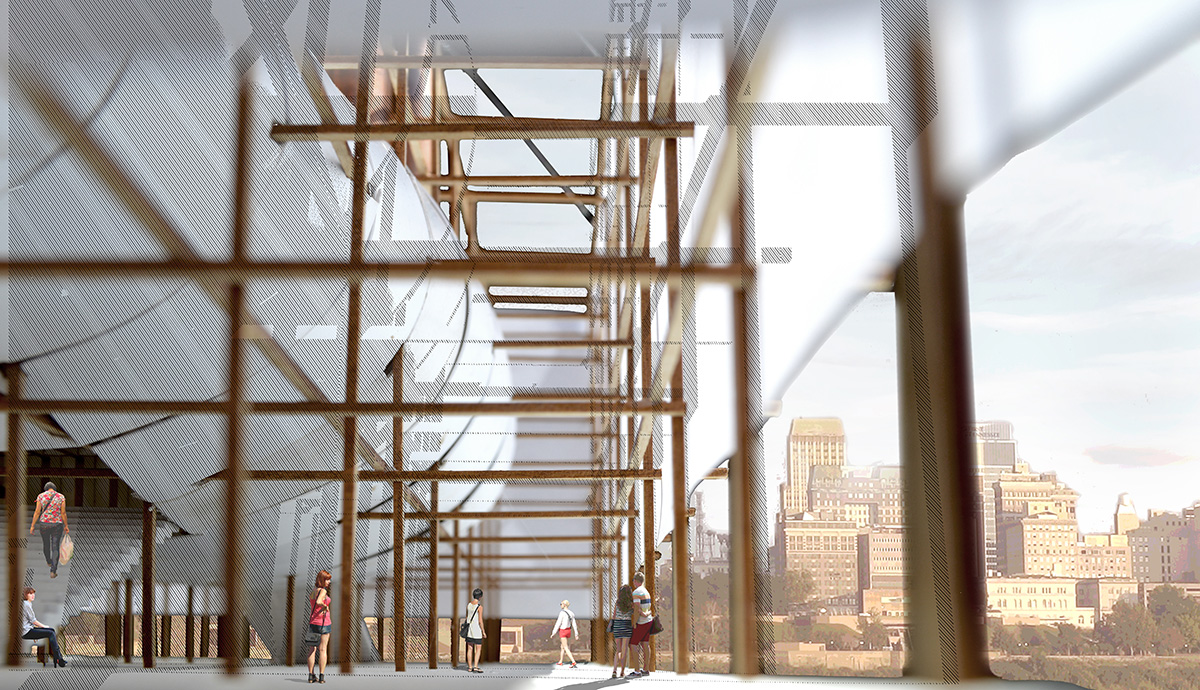
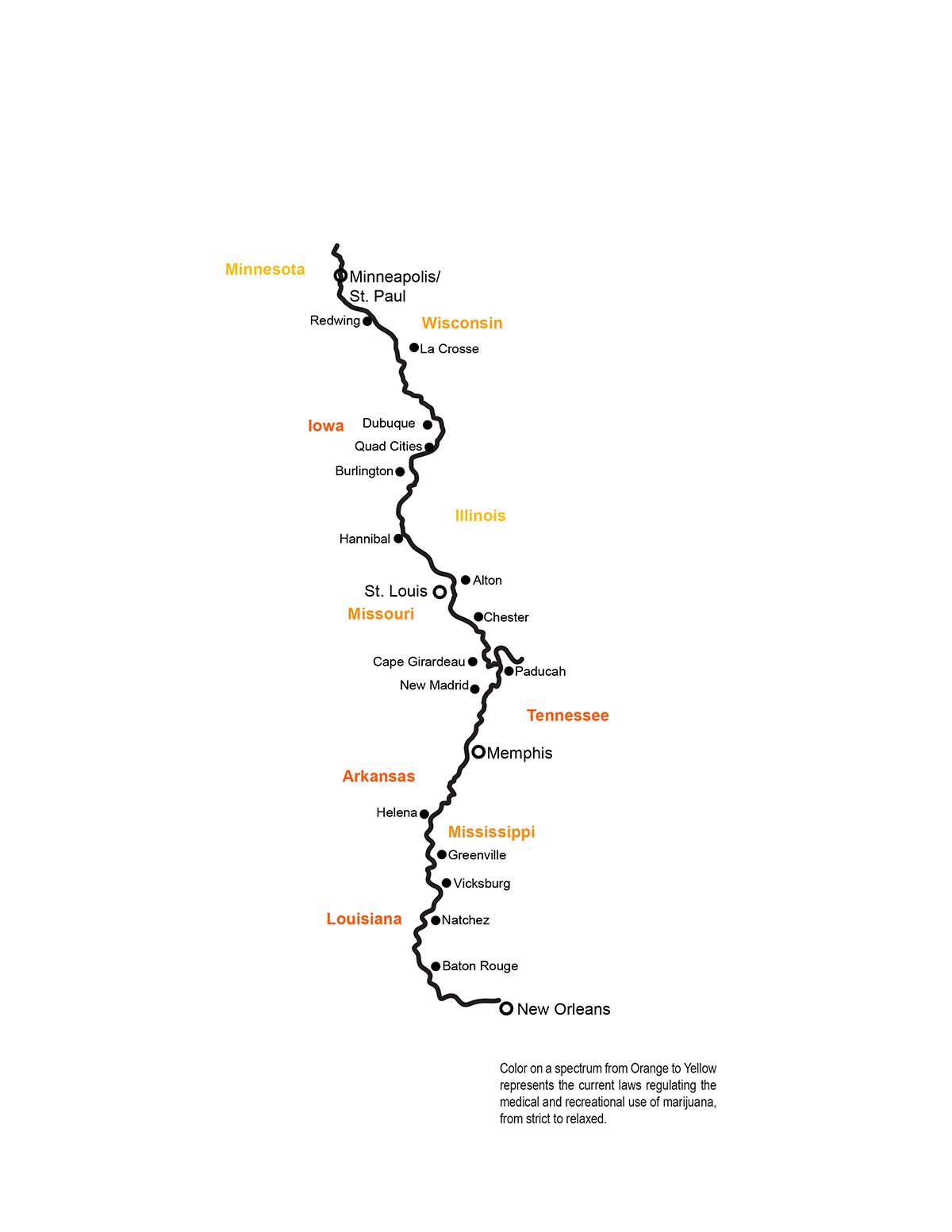
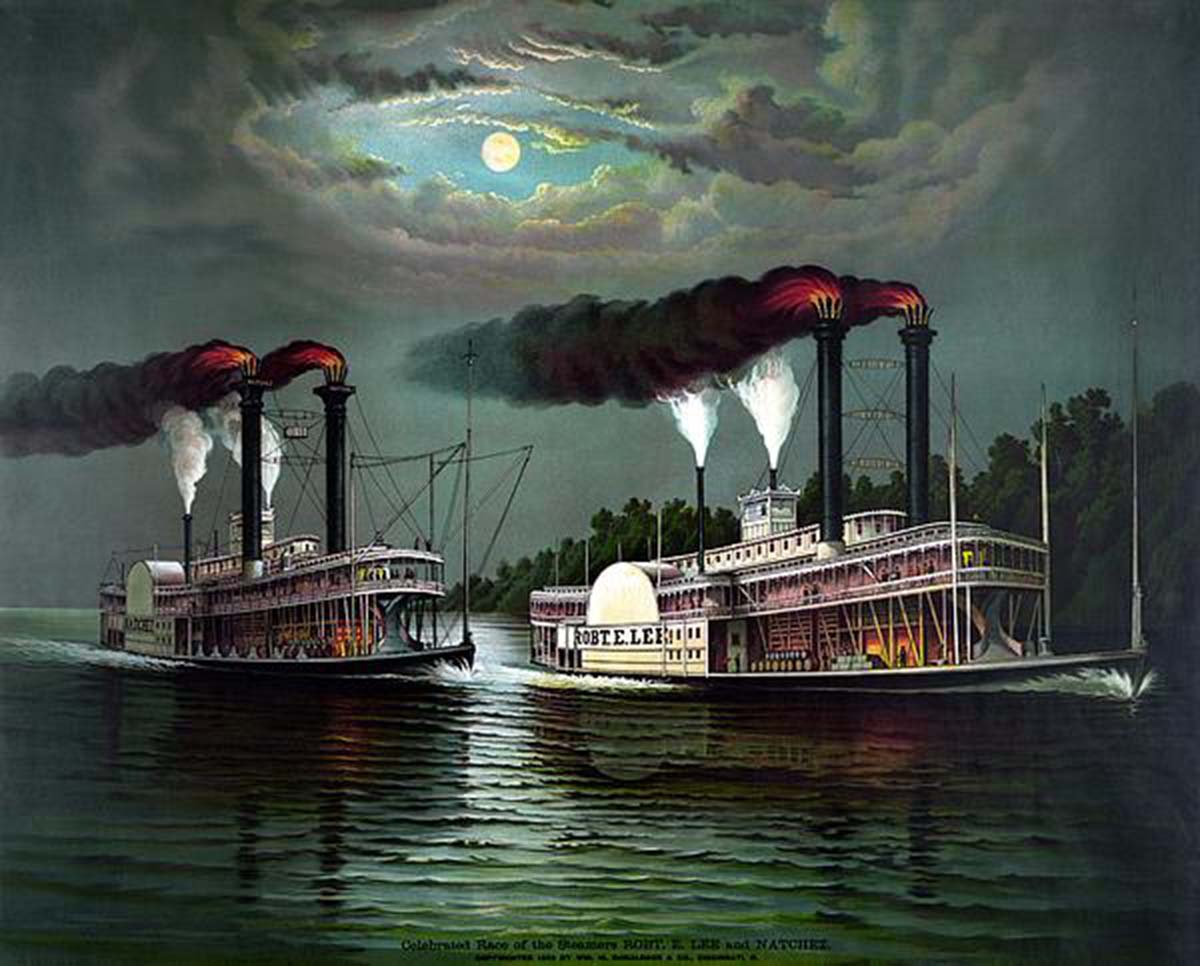
Honorable Mentions

Cure In The Cube: Elzbieta Komendacka (Politechnika Wroclawska)

Green Is Clean: Miroslav Stafi, Julia Azamatova, Nikita Petrov (Julia Azamatova Architectural Bureau)

Metamorphosis: Teruaki Hara, Sai Hu, Marija Sassine (University Of Illinois, Urbana Champaign)
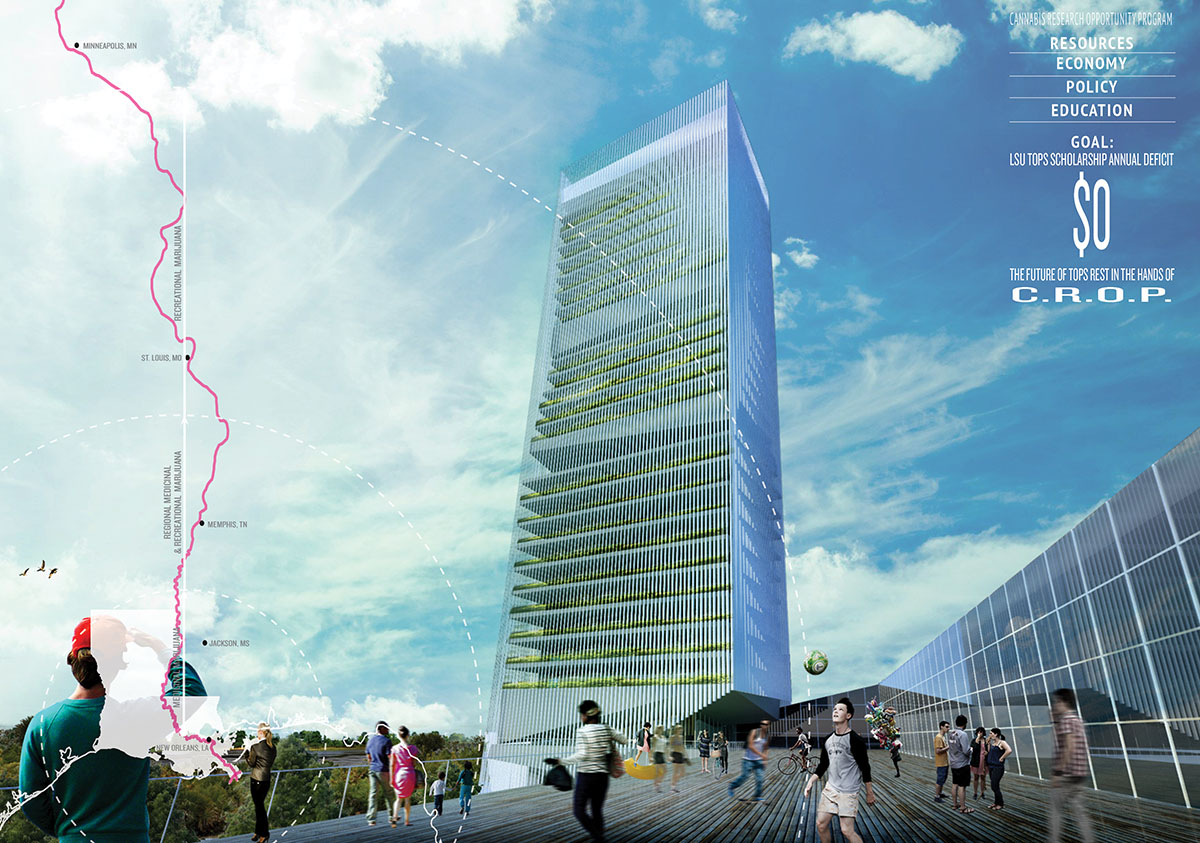
Cannabis Bank: Charles Jones, Robert Mosby, Matt Decotiis, Jill Thompson (One To One Design, LLC)
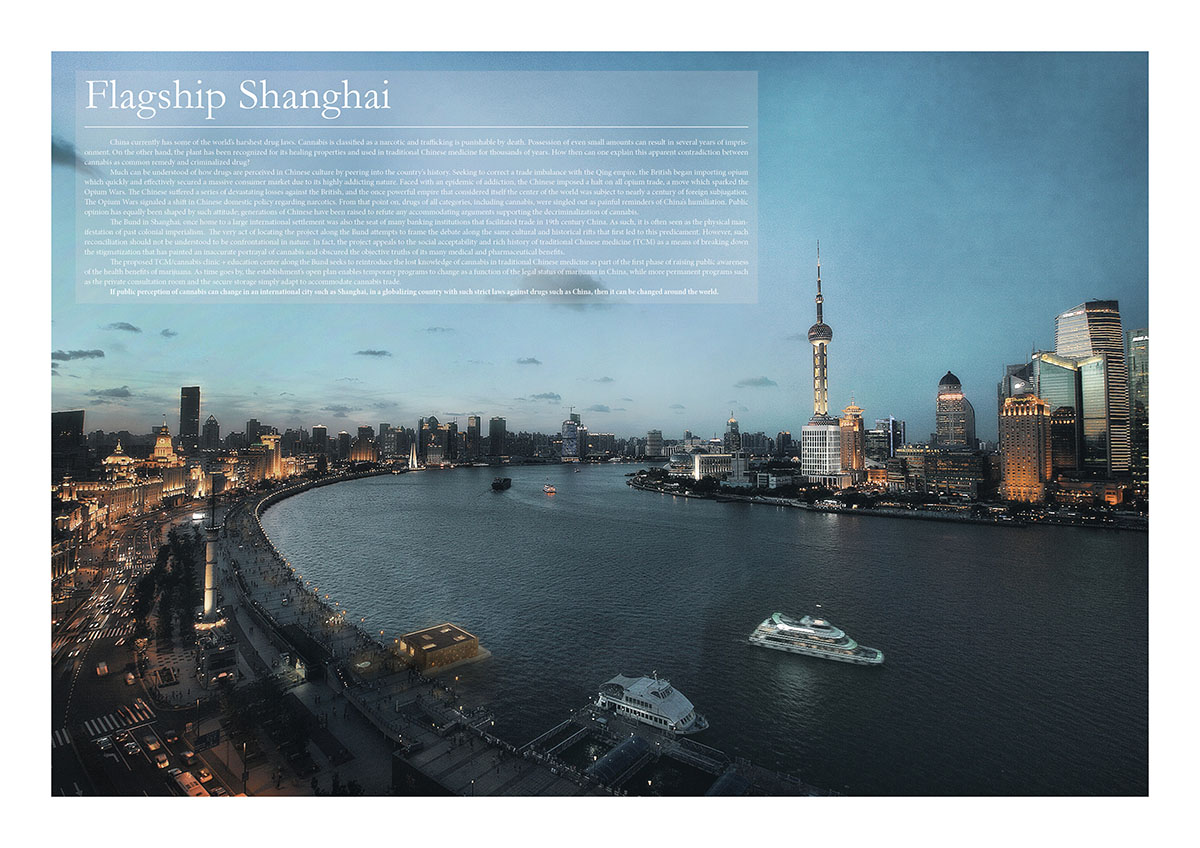
Flagship Shanghai: Pierre Shi Thach, Kevin Ting-Yu Huang, Daniel Xu Fetcho (Yale School Of Architecture)
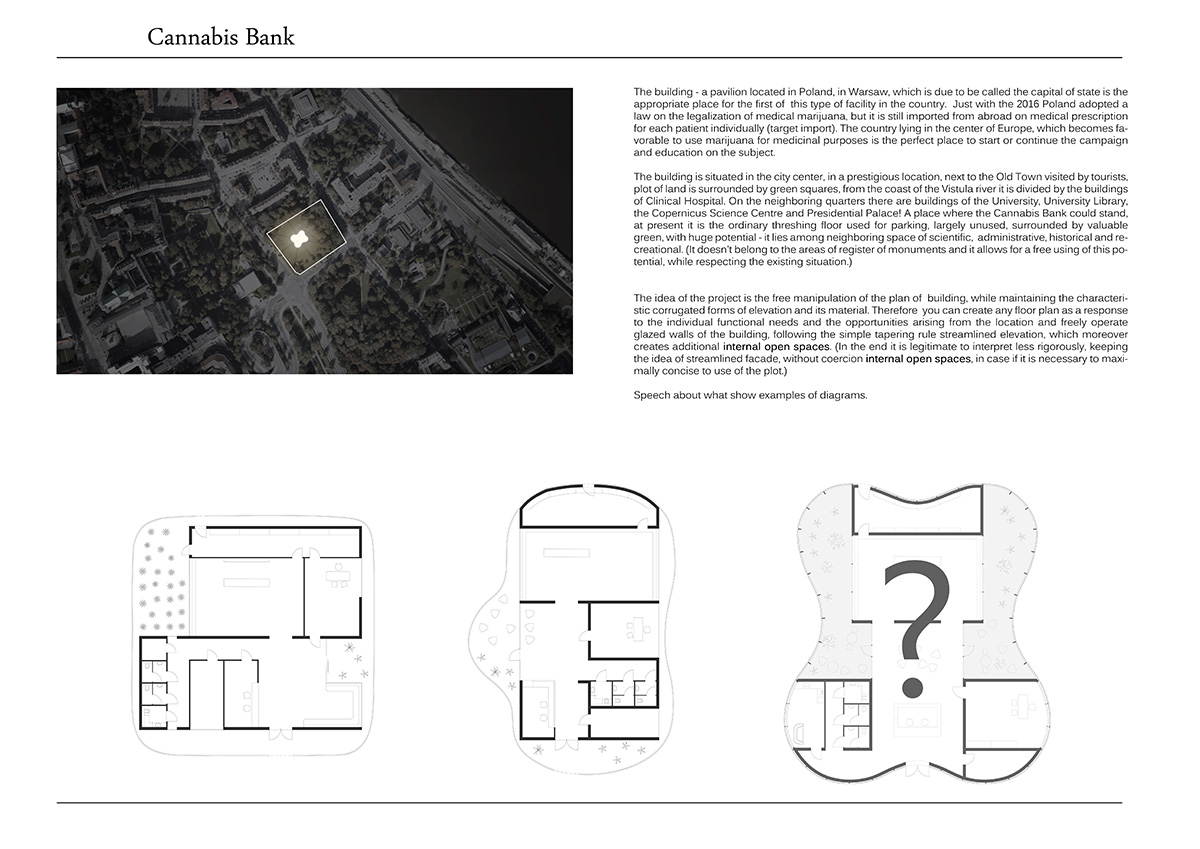
Cannabis Bank: Liliana Szulakowska (Lodz University Of Technology)
> via beebreeders.com
